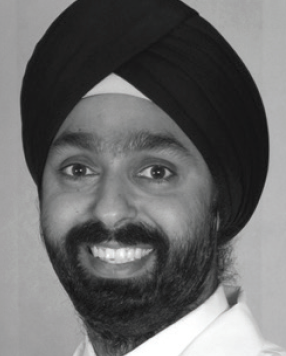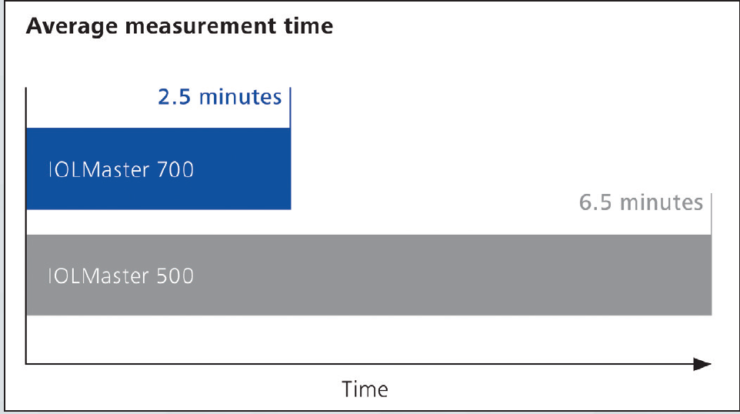Sponsored by Carl Zeiss

INDER PAUL SINGH, MD
Dr. Singh is the President of The Eye Centers of Racine & Kenosha, Ltd. He attended medical school at Finch University Health Sciences-Chicago Medical School in Chicago, Illinois, and completed his residency at Cook County Health & Hospitals System in Chicago, Illinois. In July 2004, he finished his fellowship in Glaucoma at Duke University. He has been involved in clinical research and has published papers in several ophthalmology journals as well as presented at meetings and universities around the world.
When operating our busy cataract practice, my colleagues and I are frequently looking for ways to increase efficiency and flow in our office. In an effort to improve efficiency, we began to analyze our protocol for cataract evaluations. Like most clinical practices, we incorporate the use of optical biometry scans in our cataract evaluations to obtain the necessary data to choose a lens and discuss astigmatic correction with patients. Herein I share how we were able to shave an average of 5 minutes off of each cataract evaluation by transitioning from the use of an optical biometer (IOLMaster 500, Carl Zeiss Meditec AG) to a swept-source optical biometer (IOLMaster 700, Carl Zeiss Meditec AG).
ELIMINATING REFRACTIVE ERROR
I have used the IOLMaster 500 in my practice for 10 years; it has been our standard technology for measuring the anatomical characteristics of the eye to produce IOL power calculations. As with all biometry devices, there have been limitations, especially in dense cataracts. The IOLMaster 700 has overcome these challenges as well as presented new timesaving benefits with its ease of use and intuitiveness.
The IOLMaster 700
- Provides a full-length OCT image showing anatomical details on a longitudinal cut through the entire eye. Therefore, unusual eye geometries, such as a tilt or decentration of the crystalline lens, can be detected.
- Includes a unique Fixation Check that provides more confidence in optical biometry. Visualization of the foveal pit can reduce the risk of refractive surprises due to incorrect measurements caused by undetected poor fixation.
- Shows all measurement calipers on the full-length OCT image to visually verify what structure of the eye has been measured. As a result, complex interpretations of A-scans are no longer necessary and potential sources of errors may be eliminated.
- Encompasses a unique SWEPT Source Biometry with 2,000 scans per second for outstanding repeatability.
THE DOMINO EFFECT
To increase efficiency in our office, we must make every minute count. Our scheduling system is based on “tech time.” That is the allotted time for each technician to spend on a patient. The IOLMaster 700 is much more applicable to the average technician−one who is not quite as well trained in optical biometry−to achieve a good result in a reasonable amount of time, which allows more time to see other patients. More patients translate into a more financially viable business model.
My colleagues and I conducted an in-house comparison of the IOLMaster 500 and 700 to determine clinically and objectively how much time we are able to shave off of our protocols with the use of the 700. For 42 patients undergoing cataract evaluations, we timed biometry from the exact time the technician began entering data into the computer and instructing patients until the technician completed the scan on the second eye. The average time to obtain actual measurements for the IOLMaster 700 was 2.5 minutes (range of 2-3.5 min) and the average time for the IOLMaster 500 was 6.5 minutes (range of 3-9 minutes) (Figure 1).

Figure 1: Measurement Time of IOLMaster 700 compared to IOLMaster 500.
When adding in time for patient instruction and verification of scans, there was an additional 1-minute savings. Therefore, it takes the technician nearly three times as long to perform biometry using the IOLMaster 500 than it does when he or she uses the IOLMaster 700, which ultimately saves the technician 5 minutes per patient.
CONCLUSION
By fully integrating the IOLMaster 700 into our practice, we have been able to now allow all of our technicians, rather than only a select few, to perform optical biometry with a technology that is intuitive and user-friendly. We can also institute more checks and balances into our IOL calculations so as to reduce the chances of incorrect IOL selection and refractive errors and increase efficiency by cutting our “tech time” in half. By allowing all of our techs to obtain biometry readings, we now also have all the necessary information at the consult to help us educate and recommend the optimal IOL and surgical technique for our patients.
